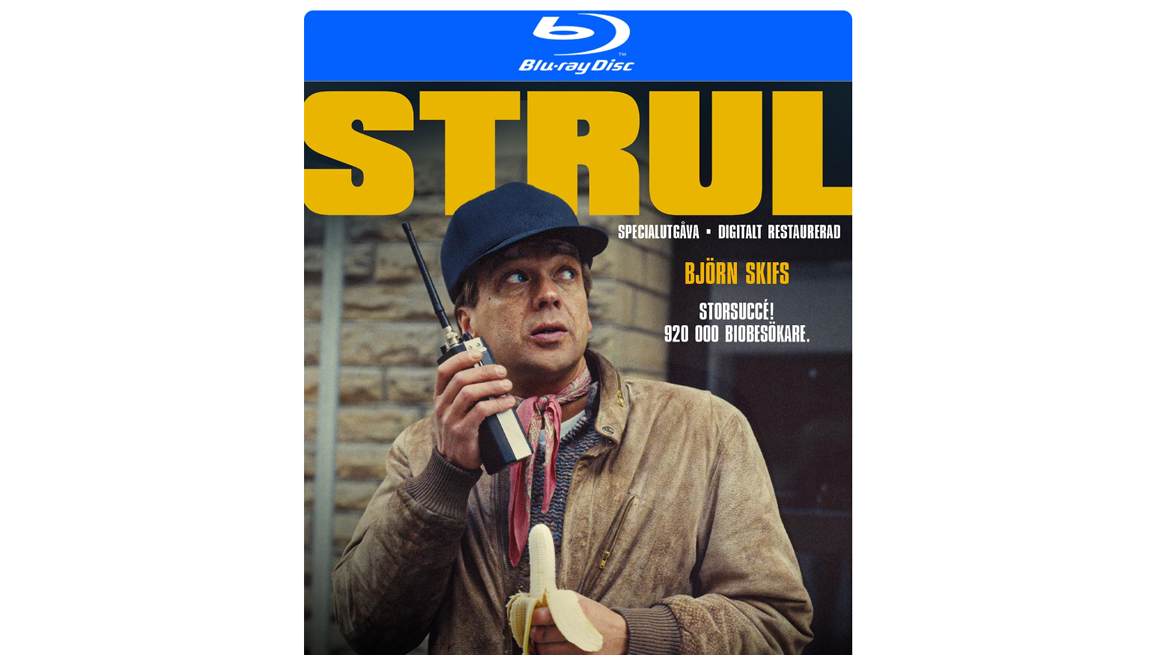TL;DR
A chemistry teacher framed for drug dealing teams up with prison inmates to prove his innocence in the quirky and action-packed 1988 Swedish film, Strul. Directed by a young Jonas Frick, it defied genre conventions with its unique visual style and over-the-top car chases. Despite some audio mixing issues and minor plot holes, the film remains a compelling and influential piece of Swedish cinema, lauded for its innovative filmmaking. A recently released Blu-ray offers a restored picture and engaging bonus features, including behind-the-scenes footage. Discover why this cult classic deserves your attention – read the full review to learn more!
In Strul (Trouble), we are introduced to Conny Runnkvist (Björn Skifts), an unassuming high school chemistry teacher. His life takes an unexpected turn when he is arrested and incarcerated. Conny, maintaining his innocence, discovers he has been framed, with his research on artificial fertilizer bearing a suspicious resemblance to amphetamine composition. As an unjustly imprisoned individual, Conny faces considerable hardship, leading him to an association with four seasoned criminals who have established a system for navigating the prison’s confines with relative ease. Reluctantly, Conny collaborates with them on various schemes in an attempt to prove his innocence while simultaneously preventing further criminal activity. As the situation becomes increasingly complicated, Conny’s budding romance with Susanne (Gunnel Fred) precipitates a descent from mere trouble into outright chaos.
Strul debuted in 1988, and I vividly recall the exhilaration I felt upon leaving the cinema. As an eleven-year-old, it was a uniquely captivating experience. While I had encountered action movies previously, this was unlike anything I had seen produced in Sweden. Strul has since served as an inspiration in my own filmmaking endeavors. Notably, the antagonist Pål (Christian Magdu) in my film Död vid Ankomst (Death on Arrival) wields a Luger pistol, mirroring Stefan Sauk’s villain in Strul. Furthermore, Gunnel Fred’s daughter, Hanna Fred Ekman, appears in Död vid Ankomst, signifying a connection between the projects.
Jonas Frick assumed the directorial role for Strul at the young age of 25. While Björn Skifs had previous on-screen experience in supporting roles, this marked his first leading performance. Frick’s distinct visual style and editing techniques diverged significantly from prevailing norms in Swedish cinema during 1988, and to some extent, even today. Strul transcends a conventional representation of reality. The hospitals exhibit futuristic design, the prisons evoke a 1930s aesthetic, and the overall film possesses a heightened sense of reality. The action sequences are notably well-executed, featuring an unprecedented number of vehicular demolitions for a Swedish film.
Despite my appreciation for the film, it is not without its imperfections. The most significant issue lies in the post-production dubbing, which results in uniform audio levels for all characters, irrespective of their distance from the camera. This occasionally leads to confusion regarding the speaker’s identity, requiring visual confirmation of lip synchronization. It appears that alterations to the dialogue were necessary to accommodate lip sync, leading to discrepancies between the audio and visual elements. Additionally, the film exhibits some logical inconsistencies and what feels like an extended duration in certain segments. However, these shortcomings are minor in the context of what remains a uniquely quirky and compelling Swedish film.
The image quality of the Blu-ray edition has been meticulously restored, presenting the film in its best possible form. Having viewed the film on multiple occasions since its theatrical release, the high-resolution presentation reveals previously unnoticed details, such as Susanne possessing a Volvo car key for her Honda Civic. The audio has been upgraded to DTS 5.1, with an alternative Dolby Digital 5.1 option available. Similar to the Göta Kanal eller Vem drog ur proppen? (Gota Canal or Who Pulled the Plug?) Blu-ray edition, the DTS mix exhibits a relatively low gain. The dialogue mixing remains problematic, stemming from the initial recording process, although it represents an improvement over previous versions of the film.
Studio S Entertainment has achieved a notable feat in unearthing three excerpts from various SVT programs showcasing behind-the-scenes footage from the production of Strul. As an avid admirer of the film, I found these clips to be highly engaging. Seeing director Jonas Frick (who tragically passed away in 2001 at the age of 39) for the first time was a particularly memorable experience. However, the condescending tone adopted by the reporters during the interviews is less appealing, revealing their apparent disdain for action films. Nevertheless, these brief glimpses into the production process are a welcome addition. The release also includes a music video and still images from the film’s creation.
In conclusion, I wholeheartedly recommend Strul as a must-see film. Beyond my personal affinity for the work, it represents a significant Swedish cinematic achievement that deserves wider recognition. Predating projects such as Karusell (Carousel), Avgrunden (The Abyss) and Feed, it demonstrated the viability of genre filmmaking in Sweden. In 2017, I approached screenwriter Bengt Palmers with a proposal for a Strul sequel, but the project did not progress further. It has since been announced that Strul will be remade and released on Netflix, raising the question of whether the commissioned production can surpass the original’s impact and quality.
Studio S Entertainment provided review copies for this evaluation. The provision of materials does not influence our editorial objectivity. We maintain an independent perspective, prioritizing our readers’ and consumers’ interests.

